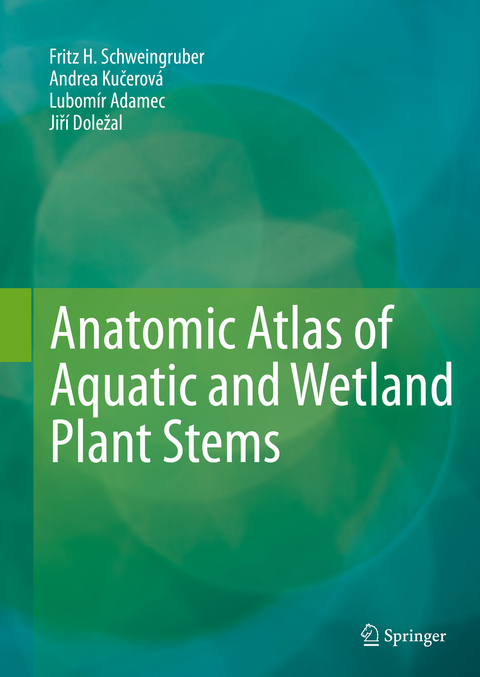
Anatomic Atlas of Aquatic and Wetland Plant Stems
Springer International Publishing (Verlag)
978-3-030-33419-2 (ISBN)
This book presents light microscopic anatomical images of aquatic and wetland plant stem. It features double-stained cross- and longitudinal sections of almost 400 species of vascular plants from the lowland to the alpine zone in Central Europe, including plants from lakes, ponds, rivers, bogs, fens, wet meadows, saline meadows, tall herb associations and alpine snow beds. The microscopic photographs at various magnifications are supplemented with detailed anatomical descriptions. For each species it provides a photo of the whole plant, a short morphological and ecological description as well as indications about its world- and Central European distribution.
The book includes a hydrobotanical and an anatomical section. The hydrobotanical section describes the ecological classification of aquatic and wetland plants and explains major ecophysiological processes e.g., photosynthesis, mineral nutrition, gas exchange, adaptations to soil anoxia, turion formation and ecology.The anatomical section highlights the variety of structures and anatomical features of vascular plants in all wet environments.Professor Fritz Hans Schweingruber passed away on January 7, 2020, shortly before his 84th birthday. Being one of the most famous dendrochronologists and plant anatomists in the world, he has contributed, through his extensive work, to the establishment of tree-ring research as an internationally recognized scientific field. He has built a dendrochronological network at his home institution, the Swiss Federal Institute for Forest, Snow and Landscape Research (WSL) in Birmensdorf, which has contributed decisively to long-term climate research and understanding of global climate change. As a biologist, Schweingruber collected himself most of the data during numerous expeditions to all continents. His research has resulted in more than 160 scientific articles and 35 books on dendrochronology and plant anatomy. After retirement in 2001, Schweingruber continued his research with a focus on anatomical analysis of herbs and dwarf shrubs around the world. One of his most important projects was a comparative study of the anatomical traits of cold-adapted plants of the Alps, High Arctic and Himalayas. One of his main achievements is a truly unique collection of anatomical micro-sections of more than 5,000 species of trees, shrubs, forbs and grasses. Sample analysis and microscopy were his way of discovering new worlds and critically challenging existing knowledge. One of his recent interests was to investigate the anatomy of often neglected groups of plants (grasses, sedges) or plant organs (petiole, fruit stalk and tree bark). In 2013, Fritz Schweingruber came up with the idea of creating an anatomical atlas of aquatic and wetland plants of Central Europe and we are grateful that we have been part of this adventure. Unfortunately, he had passed away shortly before the book appeared.
Introduction.- Anatomicaldescriptionsof Pteridophytes.- Anatomical Descriptions of Dicotyledons.- Anatomical Descriptions of Monocotyledons.- Synthesis of anatomical, Ecologicaland Phylogenetical Data.
| Erscheinungsdatum | 29.02.2020 |
|---|---|
| Zusatzinfo | VII, 486 p. 937 illus., 932 illus. in color. |
| Verlagsort | Cham |
| Sprache | englisch |
| Maße | 210 x 297 mm |
| Gewicht | 1533 g |
| Themenwelt | Naturwissenschaften ► Biologie ► Botanik |
| Schlagworte | Adaptation • annual rings • Aquatic Environment • Distribution Pattern • ecophysiology • Phloem • systematic botany • vascular plants • Xylem |
| ISBN-10 | 3-030-33419-8 / 3030334198 |
| ISBN-13 | 978-3-030-33419-2 / 9783030334192 |
| Zustand | Neuware |
| Haben Sie eine Frage zum Produkt? |
aus dem Bereich


